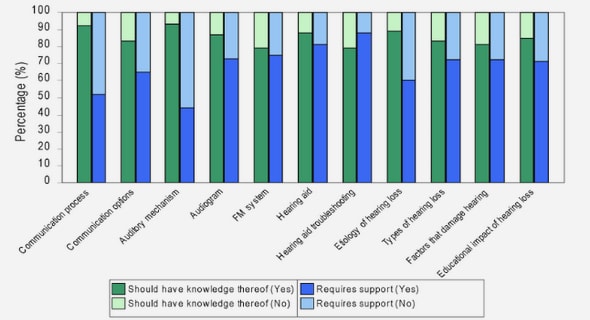(Downloads - 0)
For more info about our services contact : help@bestpfe.com
Table of contents
CHAPTER 1: Résumé analytique
1. Contexte général
2. Etat de l’art
2.1. Utilisation des satellites de télédétection pour la classification des cultures
2.2. Potentiel des données RSO dans la surveillance du cycle de croissance des cultures
2.3. Capacité à modéliser des cultures pour une gestion efficace
3. Problématique
4. Démarche
4.1. Approche générale
4.2. Potentiel des données optiques (Sentinel-2) à répertorier les cultures de blé d’hiver
4.3. Potentiel des données RSO à identifier les principales phases phénologiques du blé et à prévoir leurs dates
4.4. Modélisation des cultures pour évaluer la performance des systèmes de culture du blé et réduire de façon durable le risque économique dans la plaine de la Bekaa au Liban
5. Conclusion générale
CHAPTER 2: Study site and database description
1. Study site
2. In-situ database
2.1. Recording of global positioning system (GPS)
2.2. Soil parameters
2.3. Vegetation parameters
2.4. Survey (questionnaires)
3. Remote sensing (satellite) database
3.1. Optical images
3.2. Radar images
CHAPTER 3: Potential of optical data (Sentinel-2) in classifying winter wheat crop
1. Objectives
2. Study site
3. Datasets
4. Methods
4.1. Satellite and ground data
4.2. SEWMA Generation
5. Results
6. Discussion
7. Conclusions, strengths, limitations and future directions
Article one: A Novel Approach for Mapping Wheat Areas Using High Resolution Sentinel-2 Images
1. Introduction
2. Study area
3. Material and methods
3.1. Datasets and preprocessing
3.2. SEWMA Generation
4. Results
4.1. Crops’ temporal profiles
4.2. SEWMA First phase preliminary results
4.3. SEWMA Accuracy assesment
4.4. Wheat spatial distribution
5. Discussion
5.1. Crops’ temporal profiles
5.2. SEWMA First phase preliminary results
5.3. SEWMA Accuracy assessment
5.4. Wheat spatial distribution
5.5. Strengths, limitations and future directions
6. Conclusions
CHAPTER 4: Potential of SAR data in monitoring the winter wheat phenology
1. Objectives
2. Study site
3. State of art
4. Datasets (satellite and ground data)
5. Methods
6. Results
6.1. Optimal configuration
6.2. Accuracy assessment and quantitative analysis
6.3. Towards near real time monitoring
7. Discussion
7.1. S1 polarizations versus NDVI temporal behavior
7.2. Influence of incidence angle
7.3. Mapping outputs and quality indicators
8. Conclusions and future directions
Article two: Sentinel-1 Data for Winter Wheat Phenology Monitoring and Mapping
1. Introduction
2. Material and methods
2.1. Study site
2.2. Remote sensing data
2.3. In Situ observations (reference plots)
2.4. Meteorological data
2.5. Software employed and statistical analysis
2.6. Methodological approach
3. Results
3.2. NDVI Temporal profiles
3.3. Sentinel-1 temporal profiles
3.4. Smoothing and Gaussian fitting
3.5. Germination, heading, soft dough, and harvesting mapping
3.6. Toward near-real time phenology monitoring
4. Discussion
4.2. S1 versus NDVI temporal behavior
4.3. Influence of S1 incidence angle
4.4. Wheat phenology mapping
5. Conclusions
CHAPTER 5: Crop modelling for assessing wheat-based cropping systems’ performance and economic risk
1. Motivations and objectives
2. Study site
3. Methodological approach
4. Results
4.1. Model (CropSyst) performance
4.2. Wheat grain yield as altered by the effects of rotation, management, and soil type
4.3. Nitrogen and water apparent recovery efficiency by difference (ARED)
4.4. Rotations’ performance (productivity and efficiency) and the economic sustainability risk
5. Discussion
6. Conclusions and recommendations
Article three: Performance of wheat-based cropping systems and economic risk of low relative productivity assessment in a sub-dry Mediterranean environment
1. Introduction
2. Methods
2.1. Study site and crop management
2.2. Simulation model
2.3. Developing the scenarios to be simulated by the CropSyst model
2.4. Calculation of the productivity and efficiency indicators for assessing the performance of wheat-based cropping systems
2.5. Calculation of the “economic risk of low relative productivity”
3. Results
3.1. Calibration and validation of the CropSyst model
3.2. Wheat grain yield as altered by the effects of rotation, management system, and soil type
3.3. Nitrogen and water Apparent Recovery Efficiency by Difference (ARED)
3.4. Trends of the crops’ yields (10 rotations) over the simulation period
3.5. Rotation performance (productivity and efficiency) and economic risk of low relative productivity
4. Discussion
5. Conclusions
CHAPTER 6: Conclusions and perspectives
1. General context and main methodological challenges
2. Main results
2.1. Wheat classification. Accuracies and areas
2.2. First experience with SAR in mapping wheat phenology
2.3. Which wheat-based cropping systems to be promoted?
3. Research perspectives
3.1. Methodology related perspectives
3.2. Application related perspectives
Appendices
References



